
In mathematics and computer science, an algorithm is a finite sequence of rigorous instructions, typically used to solve a class of specific problems or to perform a computation. Algorithms are used as specifications for performing calculations and data processing. More advanced algorithms can use conditionals to divert the code execution through various routes and deduce valid inferences, achieving automation eventually. Using human characteristics as descriptors of machines in metaphorical ways was already practiced by Alan Turing with terms such as "memory", "search" and "stimulus".

A Turing machine is a mathematical model of computation describing an abstract machine that manipulates symbols on a strip of tape according to a table of rules. Despite the model's simplicity, it is capable of implementing any computer algorithm.

Digital art refers to any artistic work or practice that uses digital technology as part of the creative or presentation process. It can also refer to computational art that uses and engages with digital media.
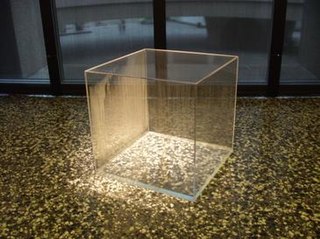
Generative art refers to art that in whole or in part has been created with the use of an autonomous system. An autonomous system in this context is generally one that is non-human and can independently determine features of an artwork that would otherwise require decisions made directly by the artist. In some cases the human creator may claim that the generative system represents their own artistic idea, and in others that the system takes on the role of the creator.
Computer art is any art in which computers play a role in production or display of the artwork. Such art can be an image, sound, animation, video, CD-ROM, DVD-ROM, video game, website, algorithm, performance or gallery installation. Many traditional disciplines are now integrating digital technologies and, as a result, the lines between traditional works of art and new media works created using computers has been blurred. For instance, an artist may combine traditional painting with algorithm art and other digital techniques. As a result, defining computer art by its end product can thus be difficult. Computer art is bound to change over time since changes in technology and software directly affect what is possible.

Frieder Nake is a mathematician, computer scientist, and pioneer of computer art. He is best known internationally for his contributions to the earliest manifestations of computer art, a field of computing that made its first public appearances with three small exhibitions in 1965.
Remko Jan Hendrik Scha was a professor of computational linguistics at the faculty of humanities and Institute for Logic, Language and Computation at the University of Amsterdam. He made important contributions to semantics, in particular the treatment of plurals, and to discourse analysis, and laid the foundations for what became an important research paradigm in computational linguistics, Data Oriented Parsing.
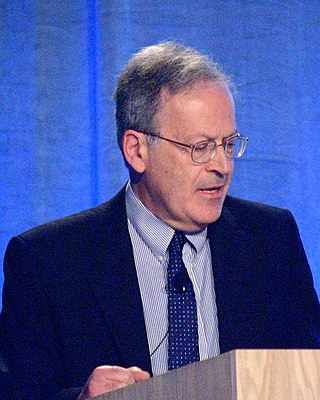
Leslie Gabriel Valiant is a British American computer scientist and computational theorist. He was born to a chemical engineer father and a translator mother. He is currently the T. Jefferson Coolidge Professor of Computer Science and Applied Mathematics at Harvard University. Valiant was awarded the Turing Award in 2010, having been described by the A.C.M. as a heroic figure in theoretical computer science and a role model for his courage and creativity in addressing some of the deepest unsolved problems in science; in particular for his "striking combination of depth and breadth".
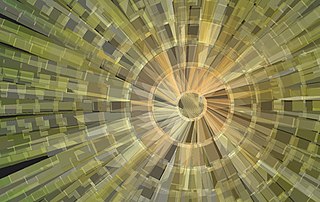
Algorithmic art or algorithm art is art, mostly visual art, in which the design is generated by an algorithm. Algorithmic artists are sometimes called algorists.
Jean-Pierre Hébert was an American artist of French origin. He specialized in algorithmic art, drawings, and mixed media. He co-founded the Algorists in 1995 with Roman Verostko. From 2003 until his death, he held an artist-in-residence position at the Kavli Institute for Theoretical Physics (KITP) at the University of California, Santa Barbara.

Patrick M. Hanrahan is an American computer graphics researcher, the Canon USA Professor of Computer Science and Electrical Engineering in the Computer Graphics Laboratory at Stanford University. His research focuses on rendering algorithms, graphics processing units, as well as scientific illustration and visualization. He has received numerous awards, including the 2019 Turing Award.
Helaman Rolfe Pratt Ferguson is an American sculptor and a digital artist, specifically an algorist. He is also well known for his development of the PSLQ algorithm, an integer relation detection algorithm.
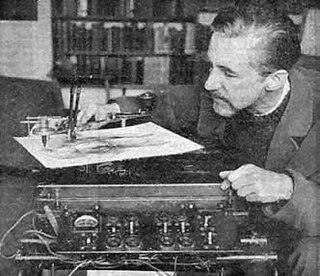
Desmond Paul Henry (1921–2004) was a Manchester University Lecturer and Reader in Philosophy (1949–82). He was one of the first British artists to experiment with machine-generated visual effects at the time of the emerging global computer art movement of the 1960s. During this period, Henry constructed a succession of three electro-mechanical drawing machines from modified bombsight analogue computers which were employed in World War II bombers to calculate the accurate release of bombs onto their targets. Henry's machine-generated effects resemble complex versions of the abstract, curvilinear graphics which accompany Microsoft's Windows Media Player. Henry's machine-generated effects may therefore also be said to represent early examples of computer graphics: "the making of line drawings with the aid of computers and drawing machines".
Alasdair Grant Taylor (1936–2007) was a Scottish artist and sculptor.
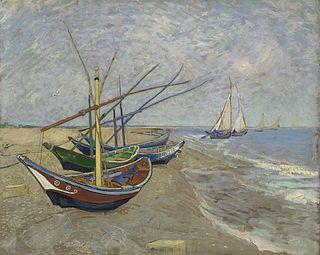
The French town of Saintes-Maries-de-la-Mer is the subject of a series of paintings that Vincent van Gogh made in June 1888. When Van Gogh lived in Arles, he took a week-long trip to Saintes-Maries-de-la-Mer on the Mediterranean Sea, where he made several paintings of the seascape and town.

The visual arts are art forms such as painting, drawing, printmaking, sculpture, ceramics, photography, video, filmmaking, design, crafts, and architecture. Many artistic disciplines, such as performing arts, conceptual art, and textile arts, also involve aspects of the visual arts as well as arts of other types. Also included within the visual arts are the applied arts, such as industrial design, graphic design, fashion design, interior design, and decorative art.
e-David is a painting robot developed at the Universität Konstanz that calculates brushstrokes from an input image and paints the image on a canvas. The project began in 2009 as a one-armed welding robot modified to be able to paint. The robot's arm can interchange between different brushes and pens, and is equipped with a distance sensor to measure exactly how far the arm is from the canvas. e-David features two main painting methods: predefined stroke candidates and dynamically generated strokes.

Vera Molnár was a Hungarian media artist who lived and worked in France. Molnár is widely considered to have been a pioneer of computer art and generative art and was also one of the first women to use computers in her art practice.

Turochamp is a chess program developed by Alan Turing and David Champernowne in 1948. It was created as part of research by the pair into computer science and machine learning. Turochamp is capable of playing an entire chess game against a human player at a low level of play by calculating all potential moves and all potential player moves in response, as well as some further moves it deems considerable. It then assigns point values to each game state, and selects the move resulting in the highest point value.
Colette Stuebe Bangert is an American artist and new media artist who has created both computer-generated and traditional artworks. Her computer-generated artworks are the product of a decades-long collaboration with her husband, Charles Jeffries "Jeff" Bangert (1938–2019), a mathematician and computer graphics programmer. Bangert's work in traditional media includes painting, drawing, watercolor and textiles.













